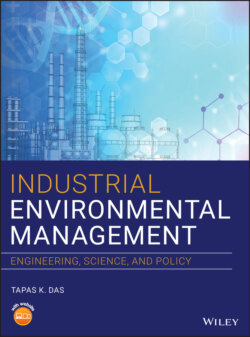Читать книгу Industrial Environmental Management - Tapas K. Das - Страница 81
2.6.1.8 The Great Smog of London
ОглавлениеGreat Smog of 1952 was a severe air‐pollution event that affected the British capital of London in early December 1952. A period of cold weather, combined with an anticyclone and windless conditions, collected airborne pollutants – mostly arising from the use of coal – to form a thick layer of smog over the city. It lasted from Friday, 5 December to Tuesday, 9 December 1952 and then dispersed quickly when the weather changed.
Figure 2.4 Nelson Tower showing the poor visibility.
Figure 2.5 Source of pollution from Battersea Coal Power Plant, London.
It caused major disruption by reducing visibility and even penetrating indoor areas, far more severe than previous smog events experienced in the past, called “pea‐soupers.” Government medical reports in the following weeks, however, estimated that up until 8 December, 4 000 people had died as a direct result of the smog and 100 000 more were made ill by the smog's effects on the human respiratory tract. More recent research suggests that the total number of fatalities was considerably greater, about 12 000 (Figures 2.4 and 2.5) (The Great Smog of 1952 2014).
The Prime Minister at that time, Winston Churchill, was adamant that it would pass, simply dismissing it as a “weather event.” London had suffered since the thirteenth century from poor air quality (Brimblecombe 1976), which worsened in the 1600s (The Observer 2002), but the Great Smog is known to be the worst air‐pollution event in the history of the United Kingdom, and the most significant in terms of its effect on environmental research, government regulation, and public awareness of the relationship between air quality and health (Bell et al. 2004; The Observer 2002). It led to several changes in practices and regulations, including the Clean Air Act 1956.
